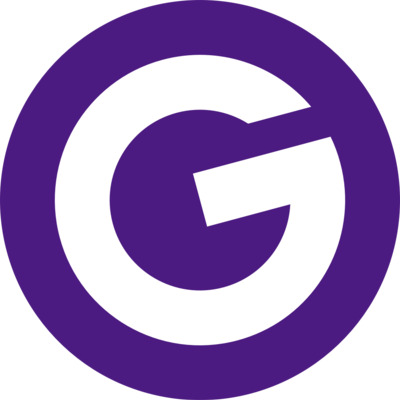Do you need to spice up your lesson plans? Add a little pizzazz to your classroom? Or just find a tech tool that makes life easier?
I’ve compiled 22 Tech Tools for 2022. Each includes a brief description and some of the pros and cons. This list was originally presented at MACUL in March.
Tech tools: Content
1. Book Creator
What is it?
Collaborative app/website to build digital books
Pros
Easy to build pages; allows students to focus on creativity; easy to share
Cons
Younger students may feel overwhelmed with all the options; collaboration can be tricky
2. Sutori
What is it?
Platform to create learning resources, presentation templates, collaborative presentations
Pros
Range of media options; simple visual designs; templates for ease; connects with Google Classroom; can differentiate access level per person
Cons
May need to upgrade for full benefit; prebuilt timelines can vary in quality
What is it?
Online STEM lessons & resources for 4th-8th grade
Pros
Range of media options; simple visual designs; templates for ease; cReal world problems for kids to solve; F2F & remote options; follows NGSS; lesson guides; GC integration
Cons
May need to upgrade for full benefit; prebuilt timelines can vary in Ss must have an email to access; some investigations are loosely linked to the problems presented in the initial video; $$ (one trial unit available; March promo)
4. Gizmos
What is it?
Science & math online simulations for 3rd – 12th grade
Pros
Simple to use; cover nearly every topic in math & science; extra resources & assessments
Cons
Lack of in-program audio or multilingual options; some Gizmos can be text-heavy; no LMS integration or Google log in
5. Book Widgets
What is it?
Create activities tailored to your content (like H5P but with backend data capability)
Pros
Useful widgets for all content areas; Lots of integration options (GC, Schoology, Microsoft, etc.).
Cons
Students have to sign in; $; many widgets promote lower-level thinking; the organization of widgets may be clunky and confusing.
6. Readworks
What is it?
Print and digital level text library
Pros
Easy-to-find content for any subject; leveled reading passages are paired with detailed lesson plans and thorough comprehension activities.
Cons
LMS integration is limited to Google Classroom
7. Clipular

What is it?
Easy screen capture tool
Pros
Archives screenshot history; can create collections; download or drag and drop option
Cons
Must use Chrome
8. Formative
What is it?
Digital assessment platform
Pros
Quickly create simple or detailed assessments; real-time monitoring and feedback
Cons
Could use more opportunities for collaboration; no family access
What is it?
Thousands of free and vetted educational resources
Pros
Lots of lessons, tool integration; with the pandemic, getting more traction
Cons
Can be overwhelming; difficult to find exactly what you need
Tech tools: Engagement
10. Blooket

What is it?
Classroom engagement platform; same question set, different games
Pros
Quirky games add variety; students stay engaged, even if they get behind
Cons
Limited to multiple-choice questions; question set library lacks curation; younger players might create accounts after games
11. Jamboard
What is it?
Interactive Google whiteboard tool
Pros
Pull files from Google Drive and collaborate while using Google Meet; add backgrounds/templates to provide more options; duplicate
Cons
Lacks ability to add media (videos, music, live links); one board is limited to 50 users at a time
12. Lumio
What is it?
Engagement and lesson delivery platform
Pros
Ready-made resources (activators, questioning & reflecting, manipulatives, graphic organizers); Google integration; self-paced or whole group; premade lessons; real-time results; collaborative opportunities
Cons
Time-consuming to build your own lessons; does not sync with LMS or GC
13. Gimkit

What is it?
Student engagement platform
Pros
Minimal setup; promotes student agency, GC integration, different ways to play with the same questions
Cons
Students could focus on gameplay at the cost of content
14. Empatico
What is it?
Platform to connect to classrooms around the world
Pros
Easy to set up and find classes; suggested activities are very helpful; Empatico Expedition challenges
Cons
Due time zone differences, connecting live with another classroom across the globe might be challenging
15. PearDeck
What is it?
Interactive presentation tool (self-paced and whole group options)
Pros
Use existing presentations; collect a variety of on-the-spot, useful data for instruction; integration into LMSs, including automatic grading on Schoology
Cons
Takes time to create presentations; some activities (like drawing) can be tricky from phones
16. EdPuzzle
What is it?
Video editing, viewing & data collection platform
Pros
Add voice-overs, comments, resources, and quizzes to videos; Chrome extension; live vs independent mode options; audio responses; looking at student-created video options; EdPuzzle originals as YouTube issue workaround
Cons
At times need to sort through multiple copies of the same video
Tech tools: Accessibility
17. iorad
What is it?
Tutorial builder
Pros
Easy to navigate; Chrome extension available; voiceover options; language translation
Cons
Can be glitchy, resulting in having user re-do tutorial; $$
18. Mote

What is it?
Audio feedback
Pros
Flexible, easy to use; Integrated into the Google suite.
Cons
Only works within the Google ecosystem; $$
19. Mercury Reader

What is it?
Removes adds, clutter from text on website articles
Pros
Removes adds, clutter from text on website articles
Cons
Can be glitchy when toggling the reader on & off
Just for you
20. PDF Candy

What is it?
Free PDF editor/converter
Pros
Easy to use, lots of format options
Cons
Only one task per hour in free version
21. Headspace
What is it?
Wellness app
Pros
Course-like structure makes it easy to build a meditation practice; free for educators; phone and web versions
Cons
Sometimes tricky interface
What is it?
Ebooks, and audiobooks from your library
Pros
Lots of titles available; can recommend titles; select loan time
Cons
May have to wait for popular titles

